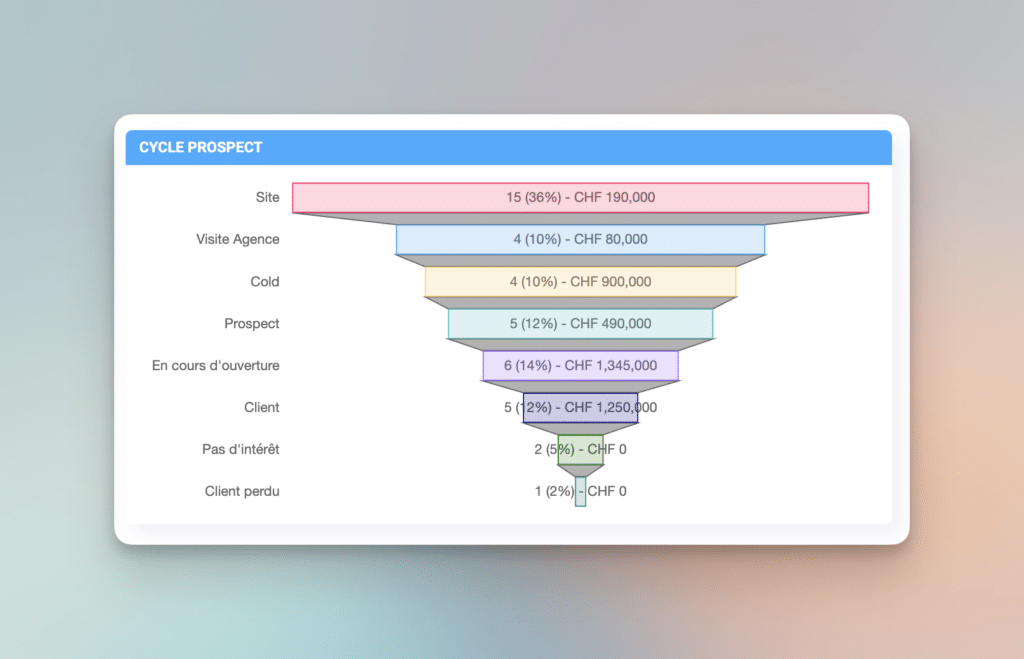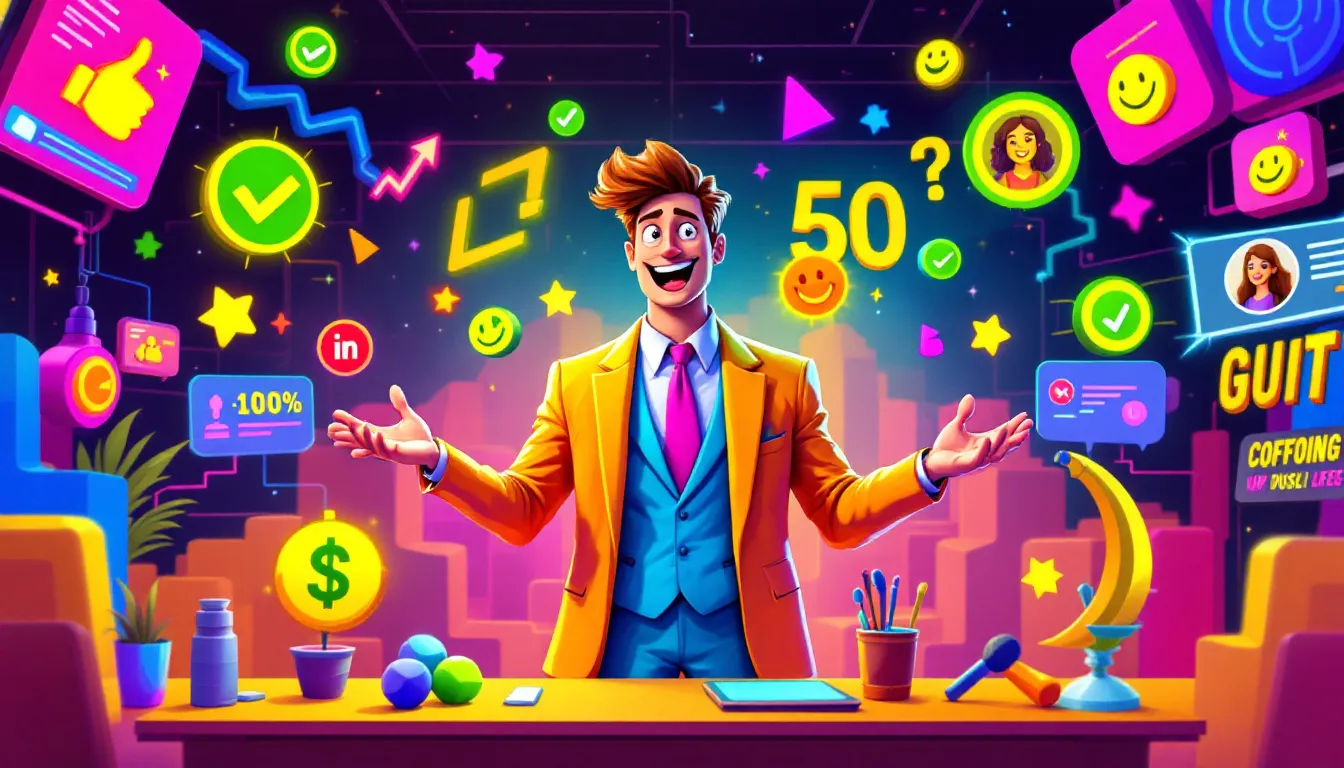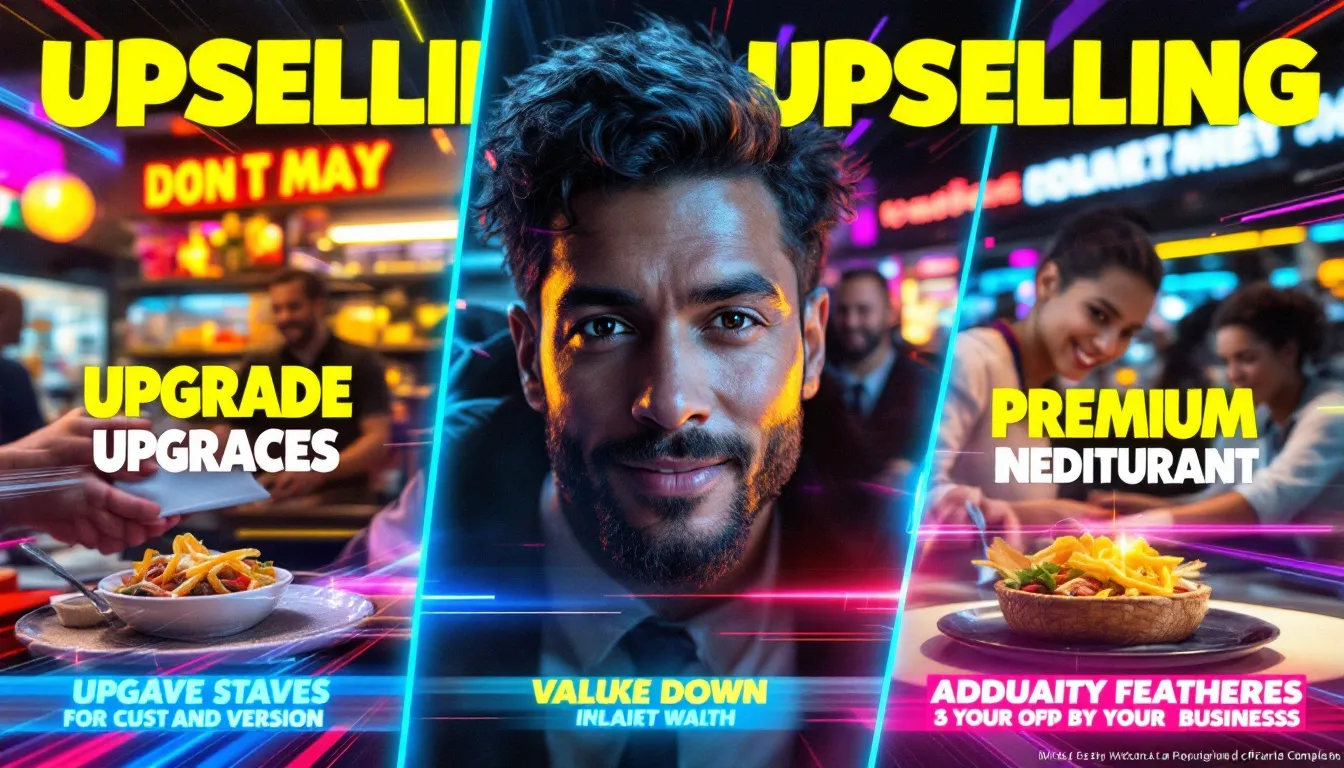The Best Upselling Techniques to Increase Revenue and Customer Satisfaction

Upselling boosts sales by encouraging customers to buy more expensive upgrades. Learn how to do it right and enhance your revenue and customer satisfaction.
Key Takeaways
- Upselling boosts revenue and customer satisfaction by targeting existing customers with better product options that meet their needs.
- Timing and personalization are key to effective upselling; presenting offers when customers are engaged increases conversion rates.
- Successful upselling strategies include recommending premium products, creating bundled offers, and leveraging customer data to tailor recommendations.
Understanding Upselling

Upselling is a sales practice where businesses encourage customers to purchase a more expensive item or upgrade than initially intended. Unlike cross-selling, which involves suggesting additional products, upselling and cross selling focuses on suggesting higher-priced alternatives, thereby targeting the same product line but with enhanced features or benefits. Cross selling and upselling are both essential sales strategies for increasing customer lifetime value, especially in ecommerce and digital platforms.
Why is upselling important so important?
Effective upselling:
- Significantly boosts revenue by capitalizing on existing customer relationships rather than seeking new ones.
- Provides customers with better products that meet their needs more effectively.
- Increases sales for businesses.
- When executed correctly, addresses specific customer needs with better product options, leading to increased satisfaction.
Successful upselling builds customer trust and loyalty by building trust and providing mutual value in the relationship. Understanding the customer’s needs and preferences allows for more tailored and effective upselling. Focusing on the customer’s experience, rather than just making a sale, leads to higher satisfaction and loyalty. When customers see that a business truly understands their needs and offers valuable upgrades, they are more likely to return, thus increasing customer lifetime value. Upselling is a strategic tool that, when used correctly, can create a more profitable sale without the need for pushy sales tactics.
Unlike traditional sales rep-driven upselling, which often relies on high-pressure tactics, modern approaches prioritize the customer’s needs and experience, making the process more customer-focused and less intrusive.
When to Use Upselling Techniques with InvestGlass

Timing is everything when it comes to upselling. Identifying the right moment to present an upsell offer can enhance customer satisfaction and increase the average order value. The best time to introduce upsell offers is when customers are already engaged and ready to make a purchase. This is when they are most receptive and open to considering additional value.
Creating urgency, such as a limited time discount, can significantly enhance the effectiveness of upselling during checkout. Imagine a customer deciding on a product and then seeing a limited-time offer for an upgraded version at a discounted price. This not only increases the likelihood of a successful upsell but also creates a sense of urgency that can motivate customers to act quickly.
Tools like BigCommerce help boost customer lifetime value by promoting relevant upsell products during key shopping moments to increase customer lifetime. Understanding when and how to present upsell offers makes the sales process smoother and more profitable, leading to increased revenues and happier customers.
Key Upselling Strategies to Implement Today
Effective upselling should focus on improving the customer experience and delivering real value. Understanding customer needs and appealing to their pain points allows businesses to make compelling upsell offers that resonate with buyers. In addition to upselling, cross-sell strategies—such as suggesting related or complementary products at checkout or on product pages—can also be used to increase sales. It is essential to remove friction from the upselling process. This will make it easier for customers to add upgraded products to their cart. Ultimately, these strategies are designed to generate more revenue while improving customer satisfaction.
Key strategies to implement include recommending premium versions of products, creating bundled offers, and leveraging customer data for personalization based on various criteria. Each of these strategies offers unique benefits and can be tailored to fit different models of business and customer preferences.
Let’s delve deeper into these strategies to see how they can be effectively applied.
Recommend Premium Versions of Products
One of the most effective upselling techniques is recommending premium versions of products. This involves educating customers on the benefits of a premium product after understanding their needs. For instance, if a customer is looking at a basic smartphone purchase, a salesperson suggests a model with better camera quality and more storage space, which can be very compelling.
Companies like Apple excel at this by making it easy for customers to switch to higher-end configurations with just one click. Another excellent example is Figma, which encourages upgrades during free trials by using countdown timer reminders to create urgency. Extended warranties are another effective upsell, especially for high-value or technology products, as they offer customers added protection and peace of mind. Articulating the benefits of premium versions based on customer needs is a key strategy for effectively recommending premium upsells.
Advanced support or a ‘done for you’ service can also be offered as an upgrade, especially in software purchases. Connecting product benefits directly to customer needs results in more money profitable sales and ensures customers feel valued and understood.
Create Bundled Offers
Bundling products can significantly enhance the perceived value for customers. When products are bundled together, customers often feel like they are getting more for the same price, which can motivate them to buy. A laptop bundled with a carrying case, mouse, and extended warranty, for instance, can be more appealing than purchasing each item separately. Businesses can use the customer’s existing purchase as a basis for suggesting complementary products in a bundle, making the offer more relevant and attractive.
Educating customers on the benefits of these bundles and giving customers complementary items helps them recognize their needs. By understanding their needs and seeing the value in bundles, customer buying is more likely to result in larger purchases, thereby increasing sales and customer satisfaction.
Leverage Customer Data for Personalization
Leveraging customer data is crucial for effective upselling. Utilizing customer data allows businesses to target upsell recommendations more effectively. Tracking user interactions provides insights into user behavior, preferences, and pain points, allowing for more personalized and relevant upsell offers.
Platforms like Userpilot assist in identifying upselling opportunities and simplifying the sales process by integrating upselling strategies into the shopping cart experience. This not only enhances the customer experience but also increases the likelihood of a successful upsell and boosts sales.
Enhancing Upselling at Different Stages of the Customer Journey

Upselling with InvestGlass can be effectively implemented at various points during the customer lifecycle, including pre-purchase, during checkout, and post-purchase. Each stage offers unique opportunities to engage customers and present upsell offers that enhance their shopping experience. Cross selling and upselling can be applied together at these stages to maximize customer lifetime value, especially in ecommerce and digital platforms. These strategies are not limited to existing customers; they can also be used to engage new customers with timely and contextual offers.
Utilizing software to streamline the identification of upselling opportunities throughout the customer journey ensures that upselling efforts are timely and relevant. By leveraging information on what the customer has purchased, you can make relevant post-purchase recommendations that further enhance the customer experience. Let’s explore how upselling can be enhanced at different stages of the customer journey.
Pre-Purchase Upselling
Displaying upsell options on product pages influences customers before they finalize their purchase. For example, presenting a higher-quality version of an item they are considering can make them rethink their initial choice.
Offering options that are both cheaper and more expensive can help increase sales during upselling. Presenting upsell options early in the shopping experience boosts customer engagement and decision-making.
Upselling During Checkout
Checkout upselling involves suggesting additional products or upgrades at the checkout page stage. This can significantly increase average order values by suggesting related products or upgrades that complement the customer’s initial purchase and combine upselling with Add On add ons.
Upsell suggestions during the checkout process enhance perceived value and can elevate transaction amounts. Online retailers can use this strategy to boost sales and provide customers with a more comprehensive shopping experience in their online store.
Post-Purchase Upselling
Promoting upgrades right after an original purchase can capitalize on customer satisfaction and encourage further spending. For instance, following up with personalized recommendations after a purchase can help maintain customer relationships and encourage repeat business.
BigCommerce allows businesses to craft personalized upsell offers by analyzing customer purchase history and preferences. This approach ensures that upsell offers are relevant and timely, enhancing the overall customer experience.
Cross Selling Strategies
Cross selling is a powerful sales technique that involves recommending complementary products or services to existing customers, with the goal of increasing both the average order value and overall customer satisfaction. Unlike upselling, which encourages customers to purchase a higher-end version of the same product, cross selling focuses on enhancing the initial purchase by suggesting relevant products that add value to the customer’s experience.
For example, when a customer buys a new smartphone, a well-timed cross selling strategy might involve offering a protective case, screen protector, or wireless headphones. These complementary products not only meet additional customer needs but also improve the overall customer experience, making the original purchase more satisfying.
Effective cross selling starts with understanding customer needs and preferences. By analyzing purchase history and browsing behavior, businesses can identify which complementary products are most relevant to each customer. Cross selling opportunities can be presented at various touchpoints, such as on product pages, during the checkout process, or through follow up emails after the initial purchase. Sales representatives can also play a key role by making personalized recommendations during in-person or online interactions.
The key to successful cross selling is to focus on providing genuine value rather than simply trying to increase sales. When customers feel that the suggested products truly complement their original purchase, they are more likely to buy, leading to higher customer satisfaction, increased loyalty, and a greater customer lifetime value. By integrating cross selling into your sales process, you can boost sales while ensuring customers get the most out of every purchase.
Building Trust and Credibility in Upselling
Building trust and credibility is at the heart of successful upselling. Customers are far more likely to consider upsell offers from businesses they trust and view as credible. To foster this trust, businesses should prioritize delivering excellent customer service, consistently providing high-quality products, and being transparent about their upselling strategies.
Sales professionals play a crucial role in this process. By listening carefully to customer needs and offering personalized recommendations, they demonstrate a genuine commitment to helping customers find the best solutions. Rather than relying on pushy sales tactics, effective sales reps focus on building relationships and understanding what truly matters to each customer.
Another powerful way to build credibility is by leveraging customer feedback and testimonials. Showcasing positive experiences from other customers provides social proof and reassures potential buyers that your upsell offers are worthwhile. Transparency about the benefits and costs of premium features or add ons also helps customers feel confident in their purchasing decisions.
By establishing a foundation of trust and credibility, businesses can increase the likelihood of customers accepting upsell offers. This not only leads to more successful upselling and increased revenue, but also enhances customer satisfaction and boosts customer lifetime value. Ultimately, building trust ensures that upselling is seen as a helpful service rather than a sales ploy, strengthening customer relationships for the long term.
Measuring and Optimizing Upselling Performance
To ensure your upselling strategies are truly effective, it’s essential to measure and optimize their performance continuously. Tracking key metrics such as upsell conversion rates, average order value, and customer lifetime value provides valuable insights into what’s working and where there’s room for improvement.
Start by monitoring how often customers accept upsell offers and how these offers impact the overall customer experience. Analyzing these metrics helps identify upselling opportunities and reveals which products or offers resonate most with your audience. Using analytics tools, you can track customer behavior, segment your audience based on various criteria, and tailor upsell offers to specific customer needs and preferences.
Optimization techniques like A/B testing allow you to experiment with different upsell messages, product combinations, and timing to see what drives the best results. For example, you might test whether offering a discounted price on a premium version at checkout increases conversion rates, or whether follow up emails with personalized recommendations lead to more repeat purchases.
By leveraging data and continuously refining your approach, you can create targeted upselling strategies that increase revenue, improve customer satisfaction, and enhance the overall customer experience. Regularly reviewing performance ensures that your upselling efforts remain relevant and effective, helping you build stronger customer relationships and maximize customer lifetime value.
Best Practices for Successful Upselling

Effective upselling hinges on providing added value to customers rather than solely focusing on profit. Many companies utilize upselling techniques to enhance customer relationships and boost their revenue. By identifying upselling opportunities and understanding customer needs, businesses can make upsell offers that are both compelling and beneficial.
Implementing upselling techniques effectively can significantly increase customer satisfaction and overall revenue. Let’s delve into best practices that can help ensure upselling efforts are successful and customer-focused.
Focus on Customer Needs
To enhance upselling success, businesses should:
- Prioritize identifying and addressing genuine customer’s needs.
- Understand customers’ needs and priorities to initiate a successful upsell.
- Base recommendations for upselling on true customer needs.
Providing a product versions of the same product with enhanced benefits demonstrates care. It also reflects an understanding of customer needs. Using upgrade modals improves customer satisfaction and increases customer lifetime value.
Avoid Being Pushy
Maintaining customer comfort during upselling is crucial to ensure a positive shopping experience. Avoiding pressure when upselling allows customers to feel more in control of their purchasing decisions. Offering a limited number of upsell options can prevent customer confusion and encourage decision-making.
A balanced approach to upselling enhances customer satisfaction and loyalty, resulting in increasing revenue and helping to increase revenues over time.
Highlight Benefits Over Features
Emphasizing how premium features can improve the customer’s experience is vital for effective upselling. Squarespace encourages users to select higher-tier plans by clearly showing what additional features are included.
Squarespace uses visual comparisons of its different service levels to effectively guide users towards choosing more comprehensive website packages. Highlighting benefits over features not only boosts sales but also ensures that customers see the real value in upgrading.
Real-World Examples of Effective Upselling

Understanding theoretical concepts is one thing, but seeing them in action is what truly brings them to life. Real-world examples of effective upselling show how various businesses have successfully implemented these sales techniques and sales technique to increase sales and enhance customer satisfaction.
Let’s dive into three notable examples: Vistaprint, Spotify, and Squarespace. These companies have utilized upselling strategies in innovative ways, providing insights into how you can apply similar techniques in your business.
By learning from these upselling examples, you can identify upselling opportunities and tailor your approach to fit your unique customer base.
Example 1: Vistaprint
Vistaprint is a prime example of effective upselling. They utilize design options and quantity choices during the checkout process to enhance customer purchase amounts. By suggesting improved designs and higher quality materials, Vistaprint encourages customers to buy more by highlighting the advantages of upgrading.
These strategies drive upsells by increasing the value of customer purchases through targeted suggestions and appealing design enhancements. Vistaprint’s approach not only boosts sales but also ensures that customers receive products that better meet their needs and preferences.
Example 2: Spotify
Spotify effectively uses upselling to encourage users to upgrade to premium accounts by:
- Prompting users for unlimited skips when they try to skip too many songs at once
- Capitalizing on moments of frustration when users are unable to skip songs
- Making the premium option very appealing through these targeted prompts
Offering unlimited skips and other premium features ensures that users see the value in upgrading to a premium version account. This approach not only increases revenue but also enhances the user experience by providing more flexibility and control over their music choices.
Example 3: Squarespace
Squarespace uses side-by-side comparison charts to show differences between package levels, encouraging users to choose higher-tier plans. This visual comparison highlights the benefits of upgrading, such as additional features and better support options.
Clearly showing what is included in each package helps customers make informed decisions that best suit their needs. This approach not only informs customers about available features but also nudges them towards packages that offer more value, leading to increased sales and customer satisfaction.
Tools to Help Identify and Implement Upselling Opportunities
Successful upselling strategies often leverage customer behavior insights to tailor recommendations. Utilizing appropriate tools and software can significantly enhance upselling efforts by:
- Providing valuable insights into customer behavior
- Tracking user interactions
- Identifying potential upselling opportunities Many businesses use sophisticated software solutions to achieve these goals.
Integrating customer insights through these tools facilitates better-targeted upselling, ultimately enhancing both revenue and customer satisfaction. Let’s explore two powerful tools: Userpilot and BigCommerce.
Userpilot
Userpilot helps in:
- Tracking user behavior, making it easier to determine when customers are ready for upselling.
- Segmenting users based on their interactions.
- Facilitating targeted upsell offers that resonate with individual needs and preferences.
The platform supports the creation of customized messages to enhance the effectiveness of upselling efforts. By leveraging Userpilot, businesses can ensure that their upselling strategies are both personalized and impactful, leading to higher conversion rates and increased customer satisfaction.
BigCommerce
BigCommerce provides features that allow businesses to create personalized upsell offers tailored to individual customer preferences and behaviors. Integration with customer data enables advanced personalization of upselling opportunities, making offers relevant to each shopper.
Implementing effective upselling strategies allows BigCommerce merchants to significantly enhance customer lifetime value, encouraging repeat purchases and increasing overall sales. The platform also offers tools for analyzing customer behavior, helping stores track interactions and optimize upselling strategies.
Summary
In summary, upselling is a powerful strategy that can significantly boost revenue and enhance customer satisfaction when done correctly. By understanding the key principles of upselling, identifying the right moments to present offers, and implementing effective strategies such as recommending premium versions, creating bundled offers, and leveraging customer data, businesses can create more profitable sales and build lasting customer relationships.
As we’ve seen from real-world examples like Vistaprint, Spotify, and Squarespace, successful upselling involves understanding customer needs and providing genuine value. By using tools like Userpilot and BigCommerce, businesses can optimize their upselling efforts and ensure that their strategies are both effective and customer-centric. Start implementing these techniques today to see a significant impact on your sales and customer satisfaction.
Frequently Asked Questions
What is an example of upselling?
An excellent example of upselling is when a customer looking for a new phone is encouraged to buy a more advanced model due to its additional features. This not only enhances their experience but also boosts sales, so seize those moments to offer value!
What is the difference between upselling and cross-selling?
Upselling focuses on getting customers to choose a higher-end version of what they’re buying, while cross-selling highlights additional products that complement their original choice. Understanding these strategies can significantly boost your sales and enhance customer satisfaction!
When is the best time to present upsell offers?
Present upsell offers when customers are engaged and ready to make a purchase; this is when they’re most receptive and likely to say yes! Leverage their enthusiasm for maximum impact.
How can businesses use customer data for upselling?
Absolutely! Businesses can enhance upselling by using customer data to tailor recommendations, ensuring that the offers are relevant and resonate with individual needs. This personalized approach not only boosts sales but also strengthens customer relationships.
What are some examples of successful upselling strategies?
Successful upselling strategies include offering design and quantity upgrades like Vistaprint, encouraging premium account sign-ups as Spotify does, and presenting package comparisons like Squarespace. Implement these tactics to enhance your sales and boost your revenue!